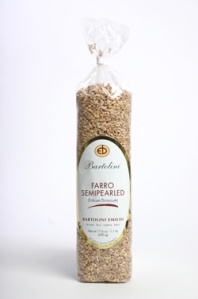I previously wrote about how growing anything, no matter how small the scale, can get a kid engaged with what they eat. Some folks insist they have a black thumb. Bah! The trick is to take on a project certain to succeed because it assumes failure. Consider how expensive fresh cut herbs are at the market. Then take a look at how much a small little 2” x 2” herblette is at the nursery. Often they are about the same. Lower your expectations. Recalibrate success to mean, “Will this last longer in the pot I bought it in than the cut herbs will last packaged in the fridge?” The answer is yes, for even the blackest of thumbs.
• Pick a sunny spot, inside or out
• Assume there will be an attempt #2
• Take a trip to the nursery center and find a shallow pot. Then head to the herb section and pick a few out, placing them in your pot to make sure they fit. Then pick up a bag of moss.
• Drive home knowing the plants will die, but you will get a few meals out of them. Some of them may last only a week. Some of them may last months.
• The assembly is really difficult:
Put plastic pots in big pot
Make sure you have a saucer under it if you need to protect your surface.
Surround with moss to hide plastic pots.
Ta-DA! Pour a glass of celebratory wine after a hard day in the garden.
• Most herbs like to be abused. Let them go dry between watering and use a scissors or kitchen shears to cut what you need as you need it.
• Some will die quickly, and others might survive a while. I find chives work very well, while cilantro always croaks the fastest on me and I never bother with it anymore. When a plant dies, just swap it out for a new one. The nursery may take the old container back to reuse, or your local community college horticulture program might like it.
In any case, much like making sure you have decent spices, having herbs in your arsenal makes basic pantry staples taste better. When we include The Child in the selection and harvest, she is more curious to try things. And if it all fails miserably, there is always more wine.






 Farro Salad
Farro Salad Quite by accident, we thankfully discovered the flatware we already owned made the perfect baby feeding spoons. In 1957, Arne Jacobsen designed a line of flatware still in production today. My in-laws gifted us the incomplete set they’d purchased on sale some 40 years ago, and it included the cutest little coffee and teaspoons. They are brushed stainless and have held up to decades of dishwashers. Machined beautifully, they have smooth, polished edges on them. They are functional as pretty condiment spoons when baby feeding years are long gone, and apparently beautiful enough that guests of my in-laws pocketed several of them over the years.
Quite by accident, we thankfully discovered the flatware we already owned made the perfect baby feeding spoons. In 1957, Arne Jacobsen designed a line of flatware still in production today. My in-laws gifted us the incomplete set they’d purchased on sale some 40 years ago, and it included the cutest little coffee and teaspoons. They are brushed stainless and have held up to decades of dishwashers. Machined beautifully, they have smooth, polished edges on them. They are functional as pretty condiment spoons when baby feeding years are long gone, and apparently beautiful enough that guests of my in-laws pocketed several of them over the years.

 This was a go-to recipe when The Child was younger, and I had forgotten just how easy it is! I made it for lunch this week and then split the leftover soup with The Child for dinner. For something showcasing a pantry ingredient, it tastes very fresh. I used homemade beef broth and
This was a go-to recipe when The Child was younger, and I had forgotten just how easy it is! I made it for lunch this week and then split the leftover soup with The Child for dinner. For something showcasing a pantry ingredient, it tastes very fresh. I used homemade beef broth and 





You must be logged in to post a comment.